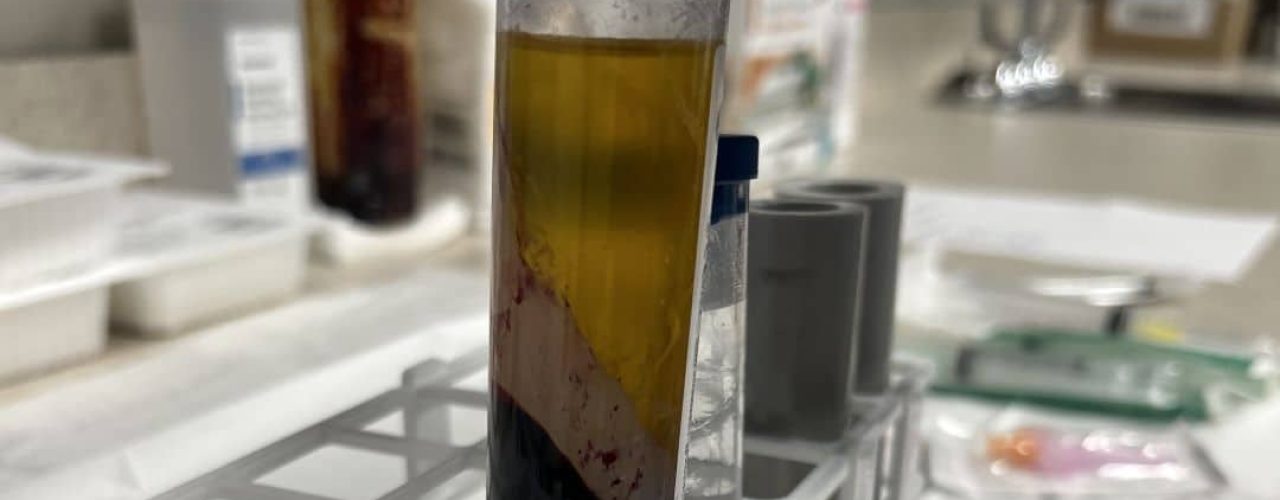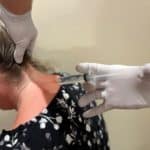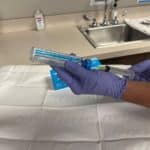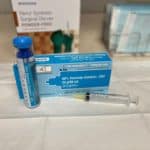What do Kobe Bryant, Derrick Rose and Alex Rodrigues have in common besides being pro-athletes? They have all used Plasma Rich Plasma therapy! Today, we will compare two therapies: prolotherapy and platelet-rich plasma PRP therapy, focusing on their effectiveness.
These therapies are used in wound healing and to alleviate joint pain. By comparing them in this article, we hope to assist someone in making an informed decision on the most suitable one for them.
Prolotherapy
Prolotherapy treatment or dextrose prolotherapy is an injection therapy that is used for pain conditions of the joints such as osteoarthritis. The procedure involves injecting a mixture of dextrose (a sugar like substance) and sterile water into a joint, tendon, or ligament. This causes inflammation which triggers the body’s natural healing process. It prompts the release of collagen and growth factors.
There are positives to opting for prolotherapy treatments over drugs or surgery:
1. Prolotherapy is non-invasive and typically takes 30 minutes or less to complete. It requires less recovery time and poses a lower risk of complications compared to surgery.
2. Prolotherapy treatments harnesses the body’s natural healing, making it a suitable option for patients who prefer a holistic approach. It can promote regeneration of new tissues and restore joint movement.
3. Another benefit of dextrose prolotherapy is its ability to strengthen and thicken tendons and ligaments through growth factors. This relieves pressure on joints and bones, reducing pain.
There are limited studies on dextrose prolotherapy but it appears to be safe with no serious side effects. Some of the mild effects reported were:
minor pain at injection site
bleeding
numbness
Based on research, many patients treated report improvement in their condition after undergoing 3-4 prolotherapy injections. Studies indicate that approximately 80-90% of patients experience a success rate. (The Guyer Institute, 2023).
The typical recovery period after each Prolotherapy injection ranges from 1 to 7 days. During this time, individuals may experience temporary inflammation, stiffness, and redness in the treated area (Fascia Institute and Treatment Center, 2023).
In 2019, a review was conducted which focused on prolotherapy as a treatment for knee osteoarthritis. When compared to the group that did not receive prolotherapy, the prolotherapy patients demonstrated greater improvements in pain reduction and functioning. (Arias-Vázquez et al, 2019)
PRP
PRP stands for Platelet rich plasma. PRP therapy is a physical therapy that involves collecting tubes of a patient’s blood platelets. The test tube is taken and processed to separate the blood platelets in the patient’s blood, a type of blood cell. After this, the platelets are directly injected into the injured or affected area such as joints, ligaments, tendons, or muscles.
PRP treatments are used to treat a wide range of conditions. Some of these include:
Knee arthritis
Osteoarthritis
Chronic musculoskeletal pain
Tendonitis such as tennis elbow.
There are many benefits to using platelet rich plasma therapy. They are listed below:
1. Faster wound healing – When PRP is injected, it provides a rich source of platelets that your body requires for healing. The body forms these to plug and repair broken tissues and vessels. PRP forms a great alternative to surgery.
2. Less pain – the platelet rich plasma therapy treatments have anti-inflammatory properties which help reduce chronic pain and swelling in arthritis. There is also evidence in studies that PRP can help repair and regenerate cartilage that arthritis breaks down. (Liang, et al. 2022)
3. Less inflammation – When the body has had chronic inflammation for weeks or months, it can damage soft tissue, so an injection of platelet rich plasma has been shown to reduce swelling and helps stimulate the body’s healing process.
Contraindications to PRP therapy
Aside from the benefits, there are some limitations of platelet rich plasma. A patient should not use PRP if they have any type of blood disorder or blood cancer, anemia, or unstable angina. These patients have a higher risk of an adverse reaction to treatment so they are not recommended.
Another drawback of PRP treatment sessions is the cost, which typically range from $500 to $1500 per treatment. Considering that multiple sessions are recommended to achieve improvement; the cost can become a financial burden for many.
Despite some drawbacks, the success rate of platelet rich plasma has been reported to achieve success rates of up to 90% for certain people. (Mattalino, 2023.)
PRP injections have been used for decades for sports injuries as a sports med to stimulate the body’s healing response and many famous pro-athletes have used them such as Kobe Bryant and Derrick Rose.
Alex Rodrigues received PRP injections after he had hip surgery and his recovery time was much shorter to the amazement of his trainers. All of these athletes are advocates of PRP.
Comparing Prolotherapy and PRP
Prolotherapy and PRP are both injectable medicines but their exact mechanism of action and their ingredients are different.
In 2013, a study was conducted to compare PRP and prolotherapy on the treatment of chronic plantar fasciitis. The results indicated that there was no statistically difference between either PRP or prolotherapy. When it came to pain, both the PRP group and prolotherapy group showed equal improvements. (Eunkuk and Jong, 2013).
When evaluating different treatments, it is essential to consider the pros and cons of each. Below, we will outline the most obvious advantages and disadvantages.
Which Treatment is Right for You?
It is important to consider certain points when choosing between PRP and prolotherapy. Because of the difference in what conditions each therapy may treat and the difference between each therapy’s limitations, the following factors will need to be considered:
1. Patient History – While both PRP and prolotherapy carry some low risks, it is important to note that PRP has specific limitations where its use is not recommended.
PRP treatment is not recommended for patients with a full medical history of anemia, blood disorders, blood cancers, or angina. These conditions serve as barriers for the use of PRP in certain individuals, whereas prolotherapy does not have these limitations.
2. Nature of the injury – PRP has a wider scope of application than prolotherapy, if your condition is more of a nerve and muscular issue, PRP can address this. If it’s a tendon, ligament, arthritis, osteoarthritis or joint based injury or wound, prolotherapy can treat these.
3. Consult with your doctor – Always consult with your doctor as prospective patients because they may understand the limitations that may apply in your case.
Another way to choose the right therapy is gathering information about others’ experiences. Exploring reviews and testimonials from patients who have undergone the therapy can be helpful. Many medical websites provide platforms for patients to share their experiences. By reviewing these, you can better understand how well the treatment worked for patients to heal with similar medical histories.
Finally, even though PRP and prolotherapy both show effectiveness and can achieve a high success rate, there is value in using a holistic approach to your health by making changes to your diet, exercise and mentality. This will assist these therapies to work.
Common Questions and Concerns
Are PRP injections the same as prolotherapy?
No, what is injected is completely different. PRP contains your own blood cells including white blood cells. Prolotherapy is a solution of dextrose and water.
Why is PRP not FDA approved?
This is because the substance of the PRP that is injected into you comes from your own body. Since PRP comes from the patient’s body, it is not classed as a drug and is not regulated by the FDA.
Which is more effective PRP or cortisone injection?
Cortisone injections are proven to show immediate pain relief for arthritis but it is a temporary relief whereas PRP stimulates the natural healing process and works long term but requires more time to see pain reduction. It can bring long term relief.
Conclusion
In conclusion, both therapies demonstrate effectiveness. PRP therapy offers a broader range of applications, including ligament, tendon, joint pain, wounds and also nerve and muscular injuries.
However, PRP has barriers where Prolotherapy does not. PRP injections can be costly where prolotherapy provides a more affordable option for patients.
To make an informed decision on which to choose, always consult with your doctor, review studies, and seek opinions from those who have tried these treatments.




